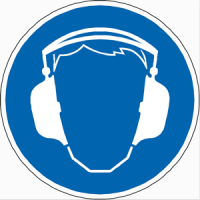Industrial deafness: how to prevent damage to your hearing
 Of the human senses, hearing is the most common one that can either be partially or completely lost.
Of the human senses, hearing is the most common one that can either be partially or completely lost.
Globally, around 275 million people cannot hear clearly. The causes of partial or total deafness can vary, with some individuals being born with such conditions while others may lose it as the result of infections or other health-related causes. However, deafness can also result from exposure to excessive noise.
Whether it’s a one-off severe impulse hit of sound or the result or prolonged exposure to sound levels that can exceed what is acceptable for the human ear, such occurrences can cause your hearing to deteriorate over time. And while age will eventually ensure we no longer hear certain higher frequencies, excessive exposure to loud noise will ensure the range of sounds we hear will only deteriorate more quickly.
For those that work in industrial workplaces such as warehouses, factories and mines or use machinery such as power drills and chainsaws, it is more likely than not that the noise levels you’re being exposed to could lead to some level of deafness if not dealt with appropriately. Luckily, managing noise levels simply comes down to being aware of your surroundings and taking the appropriate safety measures.
The first safety measure is the very logical choice of wearing hearing protection. By design, hearing protection helps cancel out a large amount of noise around you. It’s thick material absorbs the sound and can also insulate and keep your ears warm if you’re working in a cold environment. Different types of hearing protection also offer different features, such as some including embedded two-way radios if it is important for you still maintain communication with others while cancelling out other, more damaging noises.
Second, you need to be aware of the noise you’re surrounded by. Whether you’re working or just in your day-to-day life, you’d be surprised how many sounds actually exceed 85 decibels (dBA), which is the threshold before sounds can become damaging to the human ear. For example, if you chose to go to a football game, the average noise levels encountered there range from between 100 to 120 dBA. Using a lawn mower can range between 82 to 103 dBA. And the typical use of an MP3 player, depending on your volume settings, can range from an acceptable 75 dBA to a damaging 114 dBA on average. These noise levels aren’t going to be damaging if you’re exposed to them in short instalments, but they can be if your job or life in general leads to you being around noise sources such as these on a frequented basis.
Finally, when possible, try to reduce noise or distance yourself from it. Of course, this may not work in all circumstances, especially considering some will require you to stay near the source of where the noise is coming from. However, even standing a few feet back can reduce the intensity of the noise and the impact it has on your hearing. And depending on what tools you use, there are often quieter versions of these tools available. A basic example is that you could invest in a chainsaw with a lower dBA output level than more traditional chainsaws.